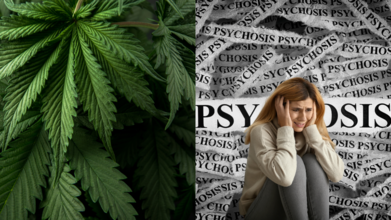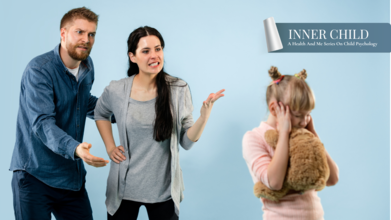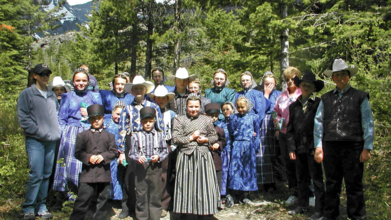- Health Conditions A-Z
- Health & Wellness
- Nutrition
- Fitness
- Health News
- Ayurveda
- Videos
- Medicine A-Z
- Parenting
- Web Stories
A Common Virus Behind Thousands Of Cancer Cases, But Why Most Americans Still Don’t Know

Credits: Health and me
When it comes to cancer prevention, Americans are leaving one of the most effective tools on the shelf: the HPV vaccine. Human papillomavirus (HPV) is the most common sexually transmitted infection in the world, and it is responsible for tens of thousands of cancer cases in the United States every year. Despite its reach and the fact that vaccination can prevent most HPV-related cancers, sobering new research shows that a third of Americans don’t even know the virus exists.
The study, conducted by researchers at the Medical University of South Carolina and published in JAMA Oncology, analyzed nationally representative data and revealed a startling gap in awareness. Many who had heard of HPV still did not know that it causes more than cervical cancer, with oral, penile, vaginal, and vulvar cancers also linked to high-risk strains. The consequences of this knowledge gap are visible in the uneven vaccination rates across the country and in the regions where HPV-related cancers are taking the harshest toll.
HPV isn’t a single virus but a family of more than 200 strains. Some types are harmless and cause only skin warts. Others are high-risk strains that can linger in the body, altering normal cells and eventually pushing them toward malignancy.
HPV causes virtually all cervical cancers, but its reach is broader. The virus is now recognized as the leading cause of oropharyngeal cancers (cancers of the throat, tonsils, and tongue base), which disproportionately affect men. It also contributes to penile, anal, vaginal, and vulvar cancers. In total, the Centers for Disease Control and Prevention (CDC) estimates that HPV is responsible for about 40,000 cancer cases annually in the United States.
This makes HPV one of the few cancers we know how to largely prevent. Vaccines currently available can block up to nine of the most dangerous strains, including HPV 16 and 18, which account for more than 70 percent of cervical cancers.
Is Ignorance Fueling Cancer?
Despite the science, Americans remain largely in the dark. The new study found that 34 percent of adults had never heard of HPV, and 37 percent did not know a vaccine existed. Even among those who had some awareness, misconceptions were common: 71 percent did not realize HPV causes oral cancer, and nearly one-third did not know it causes cervical cancer.
The regional disparities were even sharper. States in the Midwest and South—including Kansas, Nebraska, Mississippi, Arkansas, and Alabama—had the highest levels of HPV ignorance. These same states also report the lowest vaccination rates and some of the highest burdens of HPV-related cancers. According to the study’s lead author, public health researcher Ashvita Garg, “Some of these states have the lowest HPV vaccine coverage in the nation, which could be a reason why we are observing these differences.”
Why HPV Vaccination Rates Are Lagging?
Despite decades of evidence proving its safety and effectiveness, HPV vaccination coverage in the U.S. remains far below public health goals. In 2023, only about 57 percent of American teenagers had received the vaccine as recommended. The target goal, set by health officials, is 80 percent by 2030.
There are several reasons for this lag. Inconsistent public health messaging, regional cultural attitudes, and vaccine hesitancy all play roles. Misinformation has been particularly damaging. High-profile figures have spread false claims about the vaccine’s risks, undermining trust. Robert F. Kennedy Jr., the current U.S. health secretary, has gone so far as to call the HPV vaccine “the most dangerous vaccine ever invented,” despite overwhelming scientific evidence to the contrary.
This climate of skepticism not only discourages parents from vaccinating their children but also weakens the sense of urgency around HPV as a cancer prevention tool.
What Can US Learn From Denmark’s Success Story?
The gap in U.S. vaccination rates becomes even clearer when compared with other countries. Denmark, for example, launched a nationwide HPV vaccination program in 2008 and now offers the vaccine free of charge to adolescents. Recent research published in Eurosurveillance shows that the prevalence of the most dangerous HPV strains (16 and 18) has dropped to less than 1 percent among vaccinated women, compared with nearly 20 percent before vaccination was introduced.
Danish women immunized as adolescents are now expected to face a dramatically reduced risk of cervical cancer. Researchers even predict that future generations may need less intensive cancer screening, thanks to population-level immunity. This stands in stark contrast to the U.S., where vaccination rates are patchy and HPV-related cancers remain stubbornly common.
Why Oral Cancer Is the Overlooked Threat?
One of the study’s most concerning findings was how few Americans knew about the connection between HPV and oral cancer. Awareness that HPV causes cervical cancer was relatively high, but awareness of its role in throat and mouth cancers was far lower.
This matters because HPV-related oral cancers are now more common in men than cervical cancer is in women. These cancers are often diagnosed late, making treatment more complex and survival rates lower. The lack of awareness may contribute to delays in vaccination for boys, since many still see the HPV shot as something primarily for girls.
As Garg explained, “The gap between awareness that HPV causes oral cancer was notably larger compared to the awareness that HPV causes cervical cancer, highlighting the undervaluation of the importance of HPV vaccination in males.”
What Needs to Change?
Experts argue that improving HPV awareness will require a multifaceted approach. Public education campaigns, stronger provider-patient communication, and school-based outreach programs are all strategies that could help. Local initiatives, such as the HPV Vaccination Van in South Carolina, are already working to close the gap by bringing vaccines directly to communities.
But large-scale progress will also depend on rebuilding public trust. Clear messaging that frames HPV vaccination as cancer prevention, rather than just an STI measure, could make a difference. Emphasizing its role in protecting both boys and girls is equally critical.
Preventable Cancer Shouldn’t Be Killing People
HPV is not just another virus, it is the leading cause of several devastating cancers. And unlike many other cancers, this is one we can prevent with a simple vaccine. Yet misinformation, lack of awareness, and uneven access continue to hold the U.S. back.
Countries like Denmark are proving what’s possible: with widespread vaccination, HPV-related cancers can be nearly eliminated within a generation. The question now is whether the U.S. is willing to take the steps needed to follow suit or whether preventable cancers will continue to claim tens of thousands of lives each year.
The Rise of Cannabis-Induced Psychosis in the UK: What It Is and Why You Should Know

Credits: Canva
Cannabis-induced psychosis is becoming increasingly common across the UK. With stronger strains easily available and a perception that weed is harmless, doctors are seeing worrying consequences for mental health.
What Exactly Is Psychosis?
Psychosis is not just a medical term; it describes a mental state where someone loses touch with reality. A person in a psychotic episode may hear voices, see things that are not there, or believe unusual ideas with unshakeable certainty. Everyday surroundings feel warped, thoughts become jumbled, and behaviour can change dramatically. These episodes can last days, weeks, or longer, and while many people recover, some continue to experience symptoms for years.
Psychosis is not a condition in itself but a symptom of underlying mental illnesses such as schizophrenia, bipolar disorder, or drug-induced disorders. And cannabis, once dismissed as a “soft” recreational drug, is increasingly proving to be a serious trigger.
Cannabis and Its Dark Side
The UK has no shortage of cannabis users. In the year to March 2024, about 2.3 million people reportedly admitted to using the drug. But while regular use has halved over the past two decades, psychiatrists are alarmed by a sharp rise in cannabis-induced psychosis cases. The problem is potent modern strains and the growing popularity of “skunk”.
Skunk is produced from unpollinated cannabis plants with naturally higher levels of THC, the psychoactive compound responsible for the drug’s “high”. Unlike traditional varieties, these turbocharged versions can push the brain into paranoia, hallucinations, and even long-term mental health conditions.
The Risk Behind the Smoke
According to reports, the public health problem is deepening. There has been a visible rise in the number of people needing intensive support for psychosis as a result of cannabis use. What begins with smoking a few ‘joints’ and feeling a bit paranoid can easily escalate.
The issue is compounded by the fact that cannabis is readily available online. High-strength weed can be bought and delivered with the same ease as ordering a takeaway. For some users, that ease leads them into dangerous territory. Over time, repeated exposure to potent cannabis does not just spark temporary paranoia; it can cement itself into a chronic psychotic state.
How Cannabis-Induced Psychosis Feels
For those caught in its grip, cannabis-induced psychosis can be terrifying. Hallucinations distort familiar environments, creating confusion and fear. Dissociation leaves people feeling detached from their own bodies or surroundings. Everyday interactions can feel hostile or threatening, and the person’s sense of what is real becomes fragile.
While these symptoms may fade once the drug wears off, for some they linger, leading to severe depression or even suicidal thoughts. Studies suggest cannabis can also trigger schizophrenia in vulnerable individuals, an illness characterised by recurring psychotic episodes, delusions, and long-term disability.
Why Skunk Is Different
You might wonder, why is today’s cannabis so much more risky? The answer lies in THC levels. Traditional cannabis varieties contained lower amounts of this psychoactive compound, and many also carried cannabidiol (CBD), a chemical thought to counteract some of THC’s mind-altering effects. Skunk, however, has been bred to maximise THC and reduce CBD.
This results in a product that is stronger, more destabilising, and far more likely to provoke psychosis. While occasional users may brush it off as a “bad trip”, for others, the effects can be life-altering.
A Growing Health Crisis
Despite the popular image of cannabis as a “chill” substance, psychiatrists are dealing with an entirely different reality. Hospitals and rehab centres across the UK are seeing more young people admitted with psychosis linked to cannabis. Over time, people can reach a psychotic state which would not go away, even if they stop smoking. They can become very depressed or suicidal.
The public health implications are significant. Not only do psychotic disorders put immense strain on the NHS, but they also derail lives, disrupting work, education, and relationships.
Rethinking “Harmless” Weed
The narrative around cannabis has long been tangled. To some, it is a natural plant, a stress reliever, even a medicine. But the reality is more complicated. Yes, cannabis contains compounds with therapeutic potential, but when engineered for potency and consumed regularly, it can become a gateway to enduring mental illness.
People need to know that today’s cannabis is not the same mellow joint their parents smoked in the 1970s. It is stronger, riskier, and capable of tipping vulnerable minds into frightening psychological territory.
Inner Child: How Parents Pass Their Own Fears and Insecurities to Their Kids

Credits: Canva
Inner Child is Health and Me's new mental health series where we deep dive into lesser-known aspects of child psychology and how it shapes you as you grow up. Often unheard, mistaken, and misunderstood, in this series we talk about the children’s perspective and their mental health, something different than you might have read in your parenting books. After all, parenting is not just about teaching but also unlearning.
If you have ever caught yourself saying, “I sound just like my mum,” mid-argument, you are not alone. Parents, without a manual, often pass along their own experiences to their children. Alongside love and values, children often inherit their parents’ fears, insecurities, and the scripts about how to behave. This leads to adults carrying around an inner child who is anxious, overly cautious, or forever trying to live up to expectations that were never truly theirs.
The Echo Chamber of Childhood
Children are natural sponges, soaking up everything their parents say, do, and even avoid. A parent terrified of failure may unknowingly raise a child who fears taking risks. A parent obsessed with appearances might instil self-consciousness in their child, even when no one is actually watching.
Psychologists call this “emotional transmission”, when unspoken anxieties and insecurities quietly seep into the child’s developing mind.
Psychological Impacts
Growing up with inherited fears can shape a child’s mental blueprint. Here are some of the common effects:
- Anxiety as a baseline: When parents constantly worry about money, safety, or success, the child often grows into an adult who assumes the world is unsafe or unstable. Everyday challenges, like public speaking or moving cities, feel larger than life.
- Fear of failure: Children taught to avoid mistakes at all costs might internalise the idea that failure equals worthlessness. This can lead to procrastination, perfectionism, or even refusing to try.
- Chronic self-doubt: A parent’s insecurities about not being “good enough” can echo in the child’s psyche, resulting in adults who question every decision, from career choices to dinner orders.
Personality Shaping
Beyond mental health, parents’ fears subtly shape their child’s personality. Over time, kids adapt their behaviour to keep the peace, win approval, or simply survive emotionally.
- The Overachiever: Born from parents who equate success with love, these children push themselves relentlessly, often burning out before 30.
- The Peacemaker: Children of conflict-avoidant parents may grow into people who apologise for things that are not their fault, just to maintain harmony.
- The Invisible One: If a parent is overly critical, the child might shrink themselves, keeping quiet and small to avoid judgement.
- The Rebel: On the flip side, some children react against parental fears entirely, rebelling not out of defiance but as a desperate attempt to carve out their own identity.
These traits might look different on the surface, but they share a common root: a child adapting to someone else’s fears rather than exploring their own authentic path.
The Stereotypical Tags That Stick
Phrases like “Don’t talk too much”, “Be a good boy/girl”, or “People will laugh at you” might sound harmless at the time, but they work like sticky notes on a child’s developing identity. Over time, the tags become self-fulfilling labels.
“You are shy” morphs into social anxiety.
“You are lazy” becomes an inner critic that would not shut up.
“Do not cry; be strong” hardens into emotional suppression.
What parents might intend as guidance often crystallises into lifelong labels, narrowing the space for children to discover who they actually are.
The Domino Effect
One of the ironies is that these inherited insecurities often circle back. A parent afraid of judgement may raise a child who grows into an adult terrified of criticism and who then passes the same script onto their own kids. This results in the domino effect of fears hopping across generations, disguised as “advice”.
Healing the Inner Child
Awareness is a powerful antidote. Recognising that some of your habits or anxieties are not actually yours but hand-me-downs can be liberating.
Here are some steps that psychologists often recommend:
- Spot the borrowed beliefs: Ask yourself, “Whose voice is this?” when self-doubt creeps in. You might realise it is not your own.
- Challenge the tags: Replace “I am lazy” with “I need rest”. Change “I am not good enough” to “I am learning.”
- Create your own rules: If your parents avoided risks, try something small but daring, like a new hobby or speaking up in a meeting.
- Therapy or journaling: Both are tools for untangling what is yours versus what was planted in you.
Why It Matters
At the end of the day, parents will always pass down something—good or bad. But distinguishing between the love and the fears helps adults reclaim their own narratives. By recognising the echoes of parental insecurities, we give ourselves a chance to parent our inner child with kindness rather than criticism.
Why Allergies Are Almost Nonexistent In Children From THIS Community

(Credit-Canva)
One of the many beliefs that people hold, especially the older generation, is that the new way of living, which is highly protected and sanitized, has made kids weaker. While there are certain evolutionary changes we have developed over the past few centuries, it is arguable whether we are . However, their theory may not be far from the truth, but how do we know that? To this day, there are certain communities who enjoy a quiet living, void of modern possessions like the Amish community.
Surveys have noted that Amish children tend to have lesser allergies or asthma cases, but how?
Why Do Amish Children Have Less Allergies?
Scientists have long known that kids who grow up on traditional farms are less likely to have asthma and allergies. This is called the "farm effect," and it seems to be caused by being around farm animals, especially cows, and the microbes (tiny living things) that are found there.
In a 2018 study, researchers from The University of Manchester and Northern Care Alliance NHS Foundation Trust studied two unique farming communities in the U.S.: the Amish and the Hutterites. Both groups have similar genes and lifestyles, but they farm in very different ways, and this seems to be the reason for their different health outcomes.
Another 2020 study done by the American College of Allergy Asthma & Immunology compared the living of Amish and Old Order Mennonite, who also have a similar style of living, with a few comparable changes.
What Is The Difference Between Amish And Hutterite Living?
The Amish and Hutterites both came from the same group in Europe and have similar lifestyles. They eat similar foods, have large families, and avoid many modern habits like having indoor pets or using the internet. However, their farming practices are completely different.
Amish Farms
The Amish use old-fashioned, family-run farms with horses for work. Their barns are close to their homes, so children are around the animals and barn dust from a young age.
Hutterite Farms
The Hutterites live on large, modern, industrial farms. Their barns are big and located far from their homes, so children have little contact with the animals or barn environment.
This difference in lifestyle led to a major difference in health. The study found that Amish children have a very low rate of asthma (just 5.2%), while Hutterite children have a much higher rate (21.3%). This shows that the environment, not their genes, is the most important factor in preventing asthma.

How Was Amish Health Different From Mennonite Health?
The 2020 study researchers created a survey to compare the health of these two groups. They asked families about different types of allergies they had, as well as their lifestyle and farming practices.
They found that families in both groups lived on farms and drank raw, unprocessed milk. However, the Amish families had more children on average and lived on smaller farms with fewer animals compared to the Mennonite families. The survey results showed a significant difference in health between the two groups:
The Amish families reported having a much lower rate of allergies overall. Only about 26% of Amish households had a family member with an allergy.
The Mennonite families had a much higher rate of allergies, with nearly 47% of households reporting an allergy.
Why Were The Amish Less Likely To Get Allergies?
One key difference is that while both the Amish and Mennonites have large families, Mennonite communities sometimes use modern technology like tractors and electricity. In contrast, the Amish stick to traditional, old-fashioned farming.
This difference in farming methods could change the types of microbes (tiny living things) found in the farm environment. Since other research has shown that these specific microbes are important for preventing allergies, the different farming practices might explain why the Amish have a much lower allergy rate.

How the Environment Protects Against Asthma
The scientists found a key difference in the homes of the two groups: Amish homes had much more endotoxin, a type of dust from bacteria. When this dust was tested on mice, the dust from Amish homes protected the mice from developing asthma. However, dust from Hutterite homes actually made the mice's asthma worse.
This suggests that the kind of dust and microbes you are exposed to matters. The dust in Amish homes is full of "good" microbes that help a child’s immune system grow and develop correctly, preventing it from overreacting and causing asthma.
How Does Immunity Affect Allergies And Asthma?
The study also looked at the children's blood and immune systems. They found that the Amish children’s immune systems were very different from the Hutterite children's. The Amish kids had a stronger innate immune system, which is the body's first defense against germs. Their immune cells were "calm" and seemed to be trained to not overreact to things that can trigger asthma.
This research strongly suggests that the farm effect works by "training" the immune system. Early exposure to a wide variety of microbes helps the body learn how to respond correctly, which in turn protects against asthma.
While these studies give us a lot of great information, there are still many questions to answer. Scientists still need to figure out exactly which microbes or substances in the farm environment are the most protective. They also need to study children at a younger age to see how their immune systems change over time.
But for now, the findings from this research confirm that growing up on a traditional farm and being exposed to its rich environment is a powerful way to protect against asthma and allergies.
© 2024 Bennett, Coleman & Company Limited

